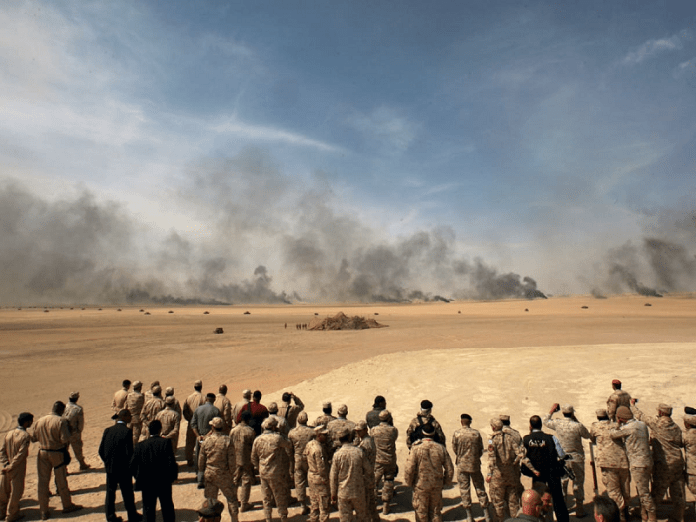As Kuwait commemorates its 32nd anniversary of the Iraqi invasion on 2nd of August, citizens recollect the historic act of resistance, unity, and pride in the face of oppression; their heroism and sacrifices are etched in their memories.
The people of Kuwait have written lessons made of these sacrifices, inked with blood, for their beloved homeland. Pages of history depicted how they defended their land and sought rightful leadership, scribbling endless stories and undertakings of unsung heroes of resistance, men and women alike.
From the day cruelty and aggression stabbed Kuwait by the heart, mobs of valiant warriors sprang from across the country, the highlights of which were Kaifan, Rumaithiya, Al-Rawdah, Bayan, and Andalus, marching towards the enemies with masterful strategies aimed at striking a surprise attack. These occupants didn’t see it coming, the irreparable damage from untrained military hands.
Similar to the narrative of resilience, another side of the story is being broadcast to the rest of the world, saying “Here is a free Arab and Islamic Kuwait; a peaceful country that rejects aggression and any kind of assault from anyone”. Diplomatic ties also played a significant role in conveying the voice of Kuwait to the international community, while Arab brothers, Islamic countries, as well as, other friendly countries spared all efforts in bringing back the people’s rights and the country’s legitimate government.
Since it was a holiday, it made it easy for invaders to seize the land, bombing the international airport and taking a British plane’s passengers hostage at five in the morning, which was followed by air and ground strikes simultaneously. Kuwaiti forces were ordered to withdraw and join the resistance at 11 PM, going underground in defense of country, sneaking to get weapons from army camps when the Iraqi invaders vacated the station.
A retired Egyptian officer who was working as a trainer at the Air Defense Institute, Salah El-Din Abdel-Fadil, played a huge role in the resistance, according to the operations center commander in the Air Force of that era, retired Brigadier General Salih Ishaq Suleiman al-Saleh . The weaponry improved as the resistance armed themselves through Kuwait’s Ministry of Defense arsenals. In addition, stations were moved to private homes in Jahra, Bayan, Andalus and Rumaithiya, and spread across Kuwait until members reached 2,000 prior to the liberation.
The country’s key resistance was formed hours after the Iraqi forces entered Kuwait to fight a fierce battle that later went underground after Kaifan fell at the hands of the Iraqi army. This resulted to the hostile forces surrounding all opposing groups, leading up to the formation of secret quarters that aimed at inflicting terror to Iraqi soldiers and raising the morale of the people of Kuwait.
The Battle of “Bait Al-Qurain” took place on 24 February 1991. It was fought by the Kuwaiti youth resisting the Iraqi occupation. It was led by 19 young Kuwaitis belonging to the Masila Resistance Group, a group of 31 young men collecting weapons and exchanging some of them for supplies, and in which 12 martyrs were claimed while the others were captured.
The battle continued until 24 February, and when the “immortal march” of the heroes of Beit Al-Qurain began at 8 AM, the leader asked the members of the resistance group to wear their own uniform prepared by him. In the midst of their preparation of weapons, an Iraqi intelligence car was roaming the area in search of Kuwaiti youths, followed by a small bus containing a number of heavily armed Iraqi soldiers. The Kuwaiti youth did well in the battle that ended with the martyrdom of three Kuwaitis on the spot and the capture of nine members of the group, whose tortured bodies were later dumped. Those who survived continued the battle until its end, after the Iraqi forces failed to find them from the rubble and power outage.























